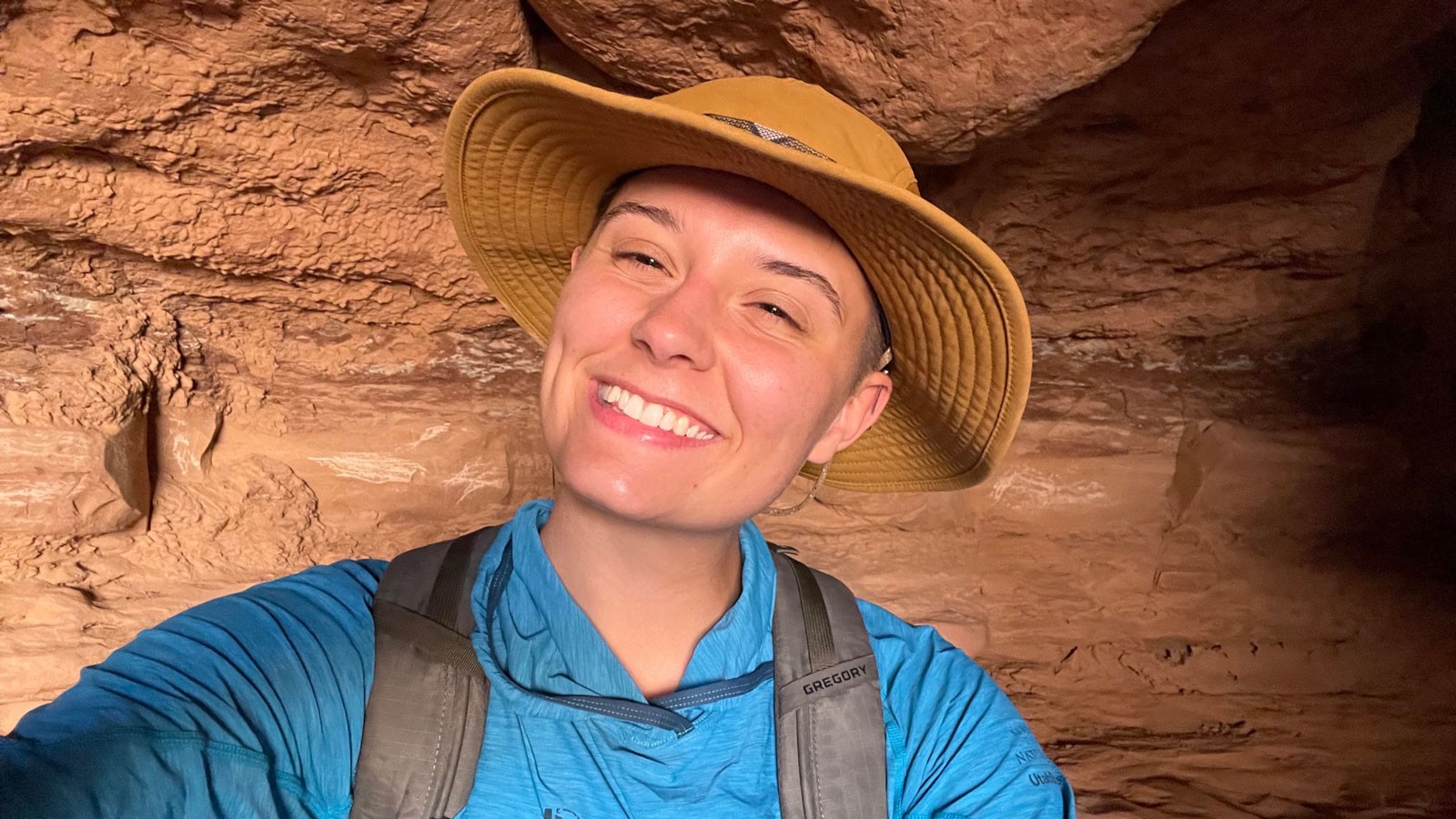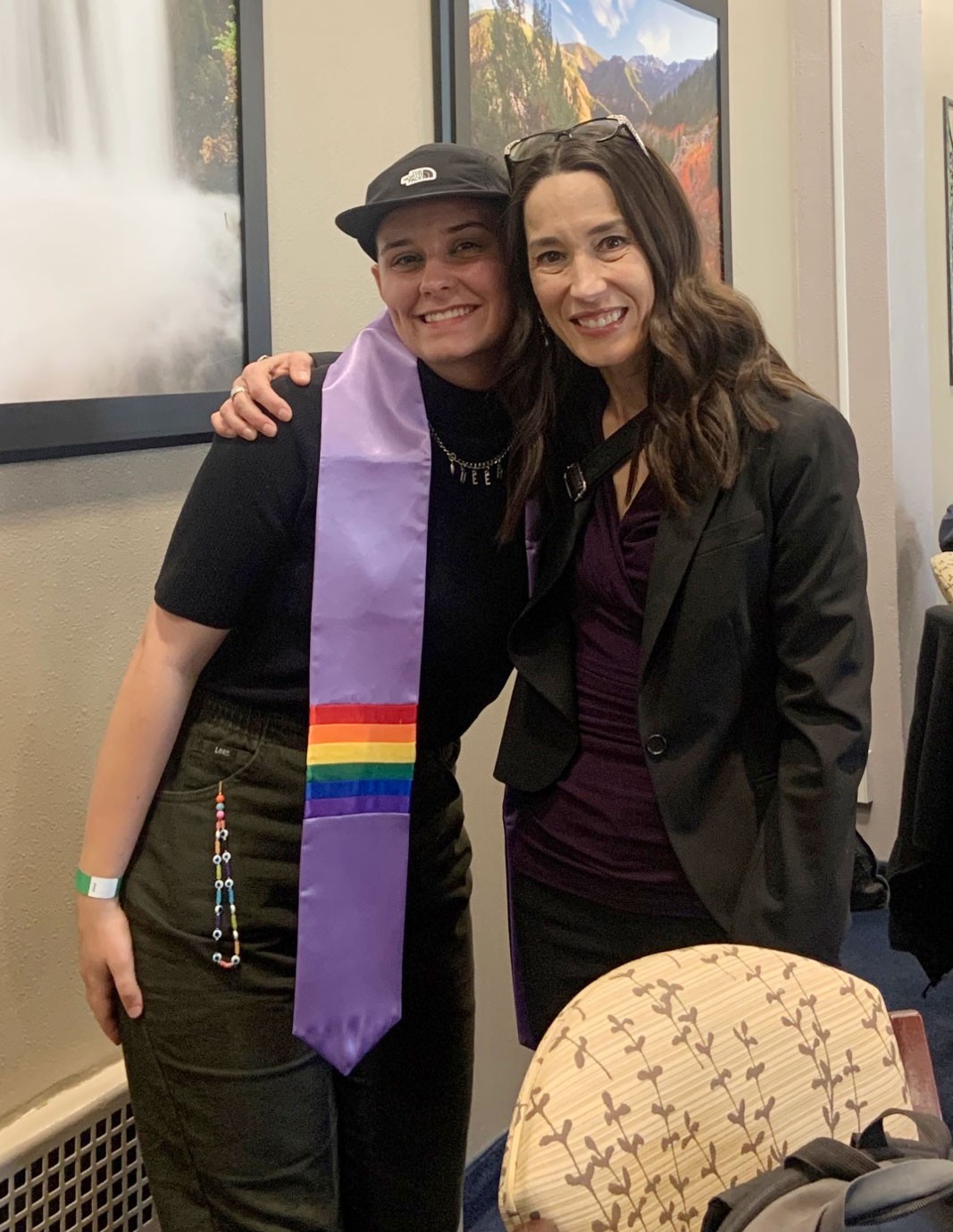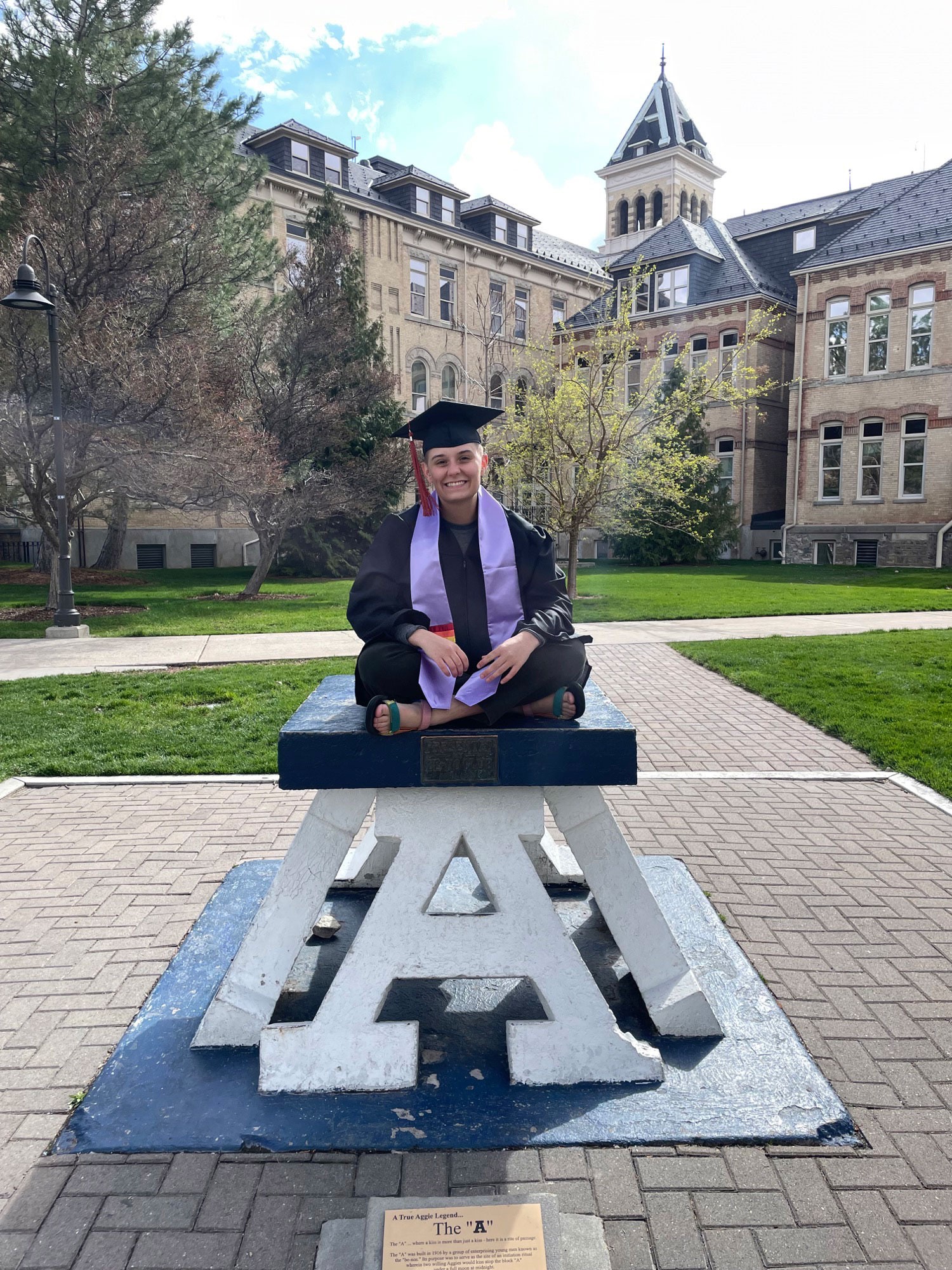Celebrating Pride: Creating an Inclusive Research Fieldwork Guide
By Marcus Jensen |
River Johnson came up with the idea for the inclusive research fieldwork guide after an experience while in the research field in Orange County, California.
To celebrate Pride Month in June, a Utah State Today series is highlighting university employees and students who are conducting research, academic pursuits and other projects related to or that benefit the LGBTQIA+ community.
River Johnson
Spring 2022 Graduate from the Quinney College of Natural Resources: Bachelor of Science in Geography with a Certificate of Proficiency in Inclusive Leadership.
Area of work
An inclusive research fieldwork handbook.
Summary of the research:
Johnson, along with Christy Glass, USU professor of Sociology and director of the Center for Intersectional Gender Studies & Research, has worked on a guide that has a three-pronged objective. The guide is titled “Pride in the Field.”
The first section is a guide for people wanting to conduct research that is inclusive of the LGBTQIA+ community and outlines how to conduct impartial research while being sensitive to all research participants.
The second section is for researchers who themselves are members of the LGBTQIA+ community and will act as a guide for them to ensure their own safety and give them things to consider before going out and doing fieldwork.
The third section provides resources and a guide for research team leaders on how they can establish a precedent of inclusion within their own teams and will have different scripts and checklists that can make conversations easier with their team members.
“This is trying to go full circle in a few different aspects on how to make it safer for our researchers and also on our research participants at the school,” Johnson said.
What sparked the questions?
Johnson first got interested in the subject while in a state park in Orange County, California. While working with a team of graduate students, they started getting hostile responses from some research participants who were offended when asked demographic questions about their gender, specifically with there being more options than just "male" or "female". Not knowing exactly how to respond or how things could have gone differently, Johnson began looking for resources on how to better conduct inclusive fieldwork. Asking their advisor, Johnson realized there were not resources available.
“Can we make them?” Johnson asked. “And they said, heck yes, we can. I was then put in touch with Christy Glass, and we have been working on it ever since.”
Why is this work important?
According to Johnson, this is one of the first, if not the first, resources to help both queer and ally researchers conduct inclusive research and prepare them for LGBTQIA+ issues they can expect in the field. Johnson has conducted interviews with multiple researchers on USU’s campus to learn about their own unique experiences. Johnson said they didn’t think their sexual identity would have an impact on their experience in research, but since writing this guide, they are realizing preparation can make all the difference.
“I didn’t go into the field thinking this would ever be a problem for me,” Johnson said. “I didn’t think I would need resources, but after talking to other people, I am realizing it is better to be prepared and to have an understanding and know you have a support system behind you. Because if you ever are in those situations, it can make it easier.”
Having spoken to other researchers, Johnson also has realized there is widespread interest in the guide and its findings. Johnson has found that multiple researchers are looking for a guide for best practices on conducting research in the most inclusive way and how to not let barriers get in the way of impartial research.
Johnson says the main goal of the guide is to get conversations started. Johnson believes the guide can be a transformative tool that can provide ease of mind to queer researchers and shed light on inclusive practices, both for researchers and research subjects.
“One of the main goals of this project is to start a conversation about it at our university,” Johnson said. “I hadn’t ever heard someone talk about this as a potential situation I could encounter while I was in the field. I’m hoping that in creating this, we are starting a conversation about what our queer students and researchers may potentially be experiencing, and hopefully it can be an enlightening experience for them if they haven’t thought about it. Another thing is making our students feel safer and more ready for the world.”
Where is this work going next?
The guide is still a work in progress, one Johnson thinks will never quite be finished. There is always more that can be added, and more research will yield even more best practices and insights. The next question Johnson is looking at has to do with when a queer researcher should reveal their queer identity and when this is appropriate, whether it should be kept from research subjects to protect both the researcher’s mental health and impartiality of the research subjects, or whether coming out to research subjects will improve relationships.
“There are different outcomes that could come from being out,” Johnson said. “Is it safe? If I share this, will I jeopardize relationships in the community I’m working in and how they view me? Will this jeopardize my own mental health? Do I want to hide? This is more than just about research; it is about researchers. That can sometimes be a difficult line to walk across between the validity of the research and the health of the researchers.”
The handbook isn’t meant to supply set-in-stone answers, but rather help researchers consider LGBTQIA+ inclusion early on.
“The questions we are trying to ask have a lot of potential answers, and that is the reason we need this resource,” Johnson said. “There are so many ways things can go, and sometimes it is impossible to navigate. Having a starting point and some things to consider before you go out and are faced with these things, hopefully that foundation of understanding and preparedness can be adapted to actual in-the-field experiences. It is just trying to compile these different pieces that we think would create a solid foundation for our researchers.”
Johnson has worked closely on the guide with Christy Glass, USU professor of Sociology and director of the Center for Intersectional Gender Studies & Research.
River Johnson graduated with a Bachelor of Science in Geography with a Certificate of Proficiency in Inclusive Leadership from the Quinney College of Natural Resources in May 2022.
WRITER
Marcus Jensen
News Coordinator
University Marketing and Communications
marcus.jensen@usu.edu
CONTACT
River Johnson
Alumnus
Quinney College of Natural Resources
river.johnson@usu.edu
TOPICS
Research 877stories LGBTQIA+ 45storiesComments and questions regarding this article may be directed to the contact person listed on this page.











